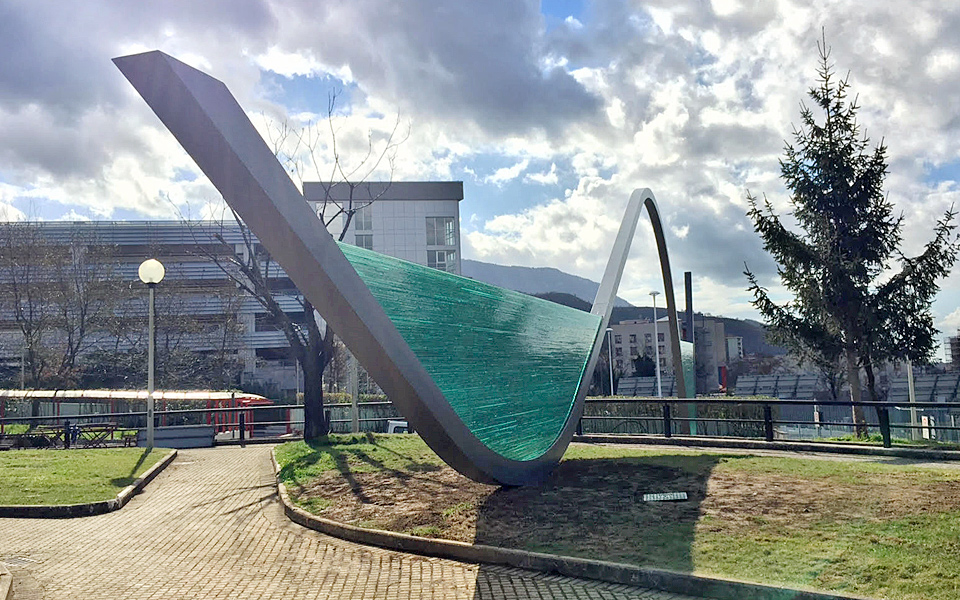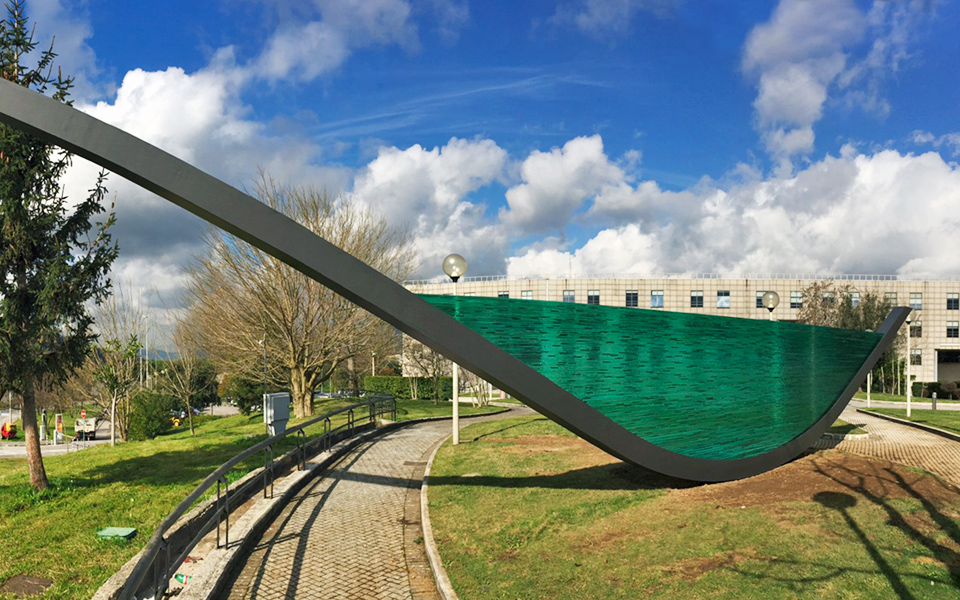In the last few years, Costas Varotsos has become as beloved to Italians as he is to his fellow Greeks. Within the last 15 years, he has installed many large-scale projects in public spaces from Sicily to the Apennines Mountains. It’s not only artistic recognition, but the love with which he is accepted that makes him a standout figure of our times.
Of course, his scope is not limited to Italy. Large sculptural installations inspired by the “Dromeas” sculpture outside the Athens Hilton can be found in various parts of Europe and North America. His career is international, but he wants to live and create in Greece.
On February 22, 2016, his monumental project, “Horizon 2”, was inaugurated at the University of Salerno in Italy. The atmosphere was emotional and flattering words were lavished on the Greek sculptor from representatives of the Italian Ministry of Culture, the university’s academics and rector, and representatives of the local government. Added to this was the praise heaped by Pericles Mitkas, the rector of the Aristotle University of Thessaloniki, where the sculptor teaches.
In the coastal town located an hour from Naples, close to Pompeii, Varotsos has installed a 30-meter-long work of glass and steel at the university entrance. It sits adjacent to a space designed by the great Ettore Sottsass to house sculptures by Edson Kuki in 2005. If in Greece academic spaces are synonymous with the ugliness of squats, in Italy one sees an image of beauty graced by the work of contemporary artists, which are free from vandalism.
“You brought us a piece of the Aegean,” the students and teachers told the Greek artist, referring to his composition that seems to condense elements of the Italian Riviera: mountains and creeks, sky, earth and water. You just need to take a walk in Costiera Amalfitana to understand the dynamism, beauty and freedom of its horizon.

In preparations that lasted several months, the artist suffered a heart attack in Salerno, recuperated there and went back to completing the project with all guns blazing.
“Everyone here treated me as if I were family, with great affection, and I recovered very quickly,” he says.
But does this project demonstrate the artist’s need to escape the difficult reality of Greece?
“My mind and my heart are always in Greece. And no matter how much I travel, I gravitate back to my base,” he says. He continues: “Kounellis says he is an Italian of Greek origin. And I jokingly say the opposite: that I am Greek of Italian origin, in the sense that the Italians were able to promote our ancient heritage thanks to the Renaissance. They have a more creative relationship with our past.”
On the initiative of the famous historian and art critic Achille Bonito Oliva he recently gave a lecture at the university explaining the project to its students.
“Varotsos is a rare case who can draw on yesterday and translate it into tomorrow,” said Oliva, who also attend the inauguration.











